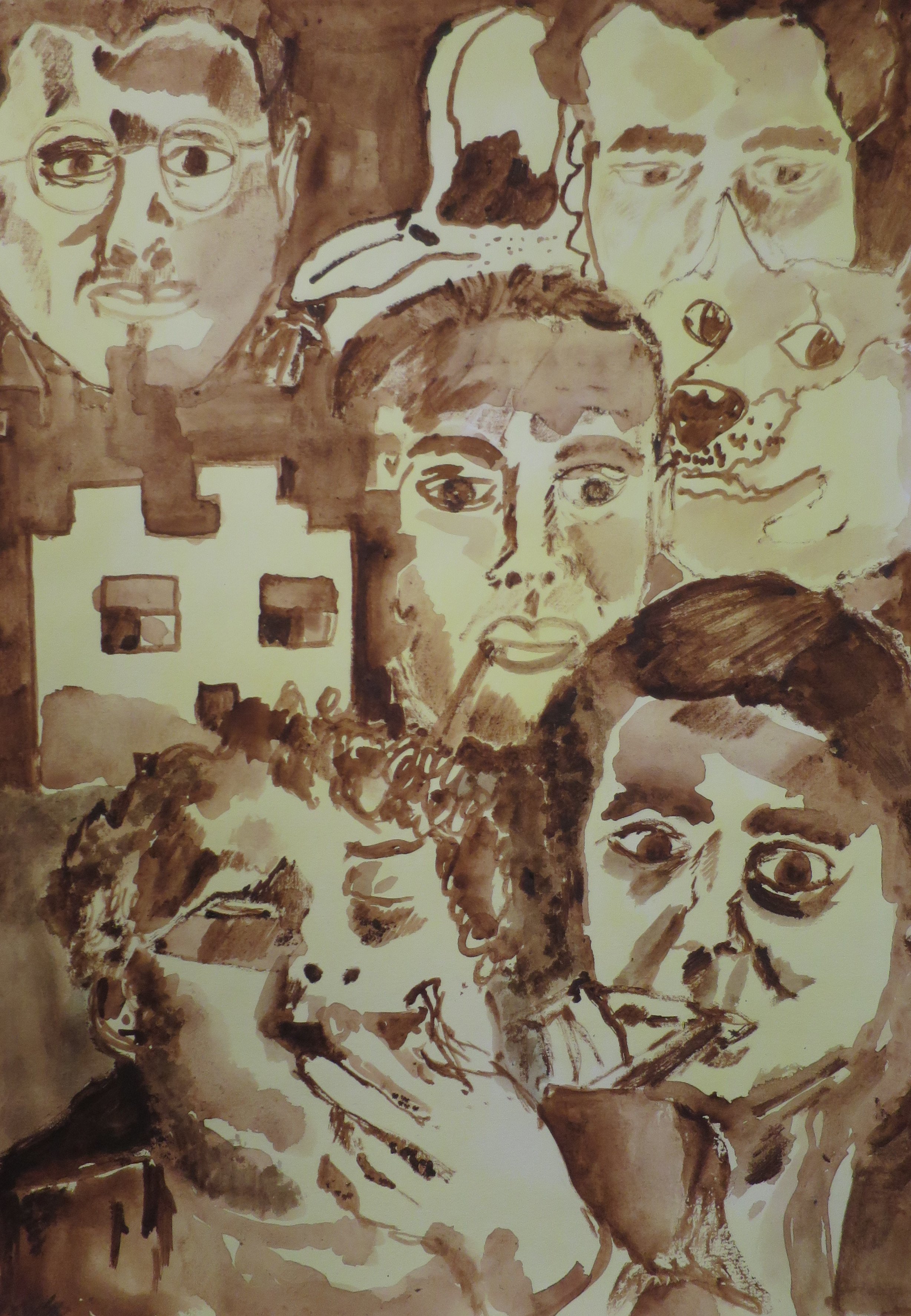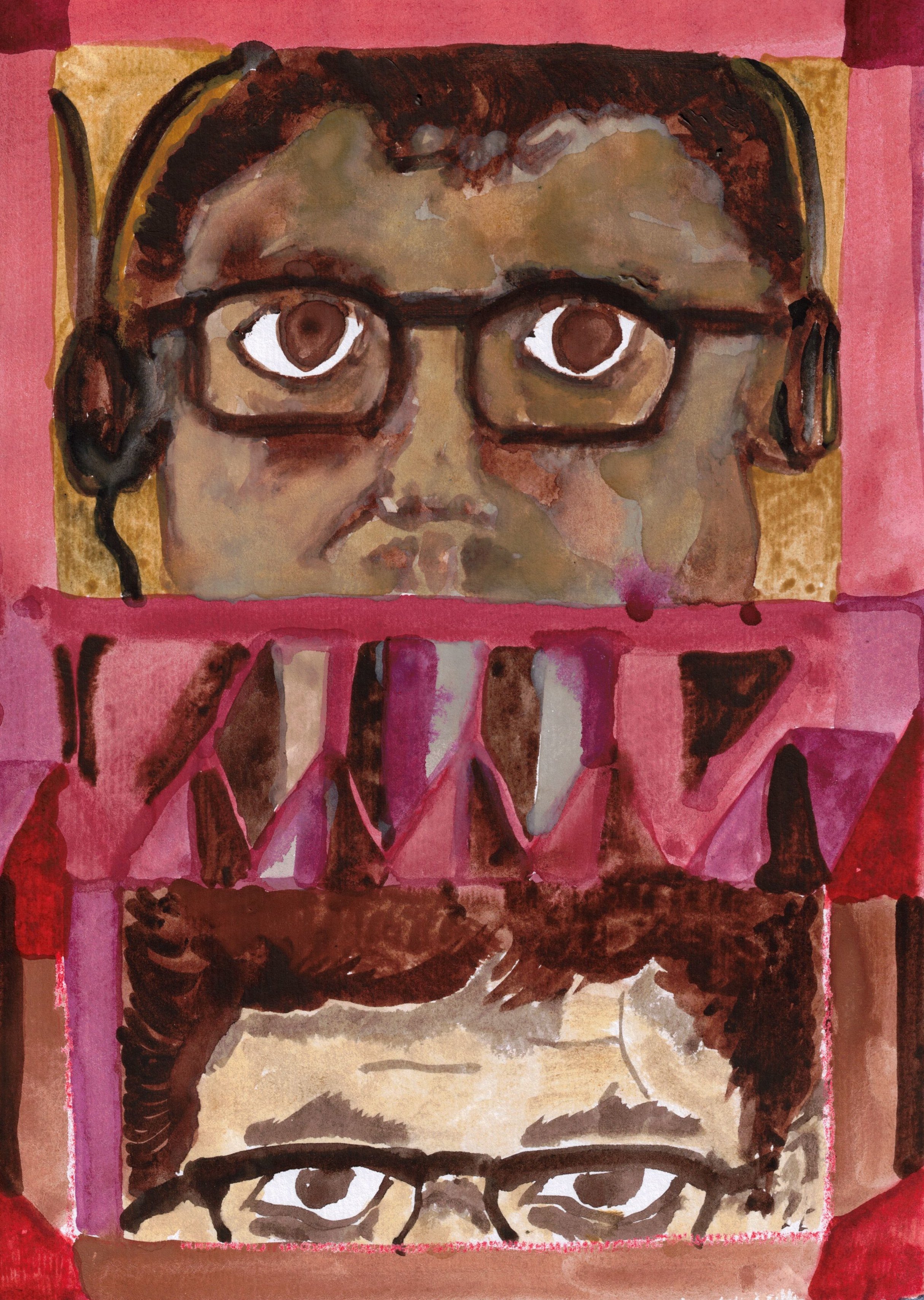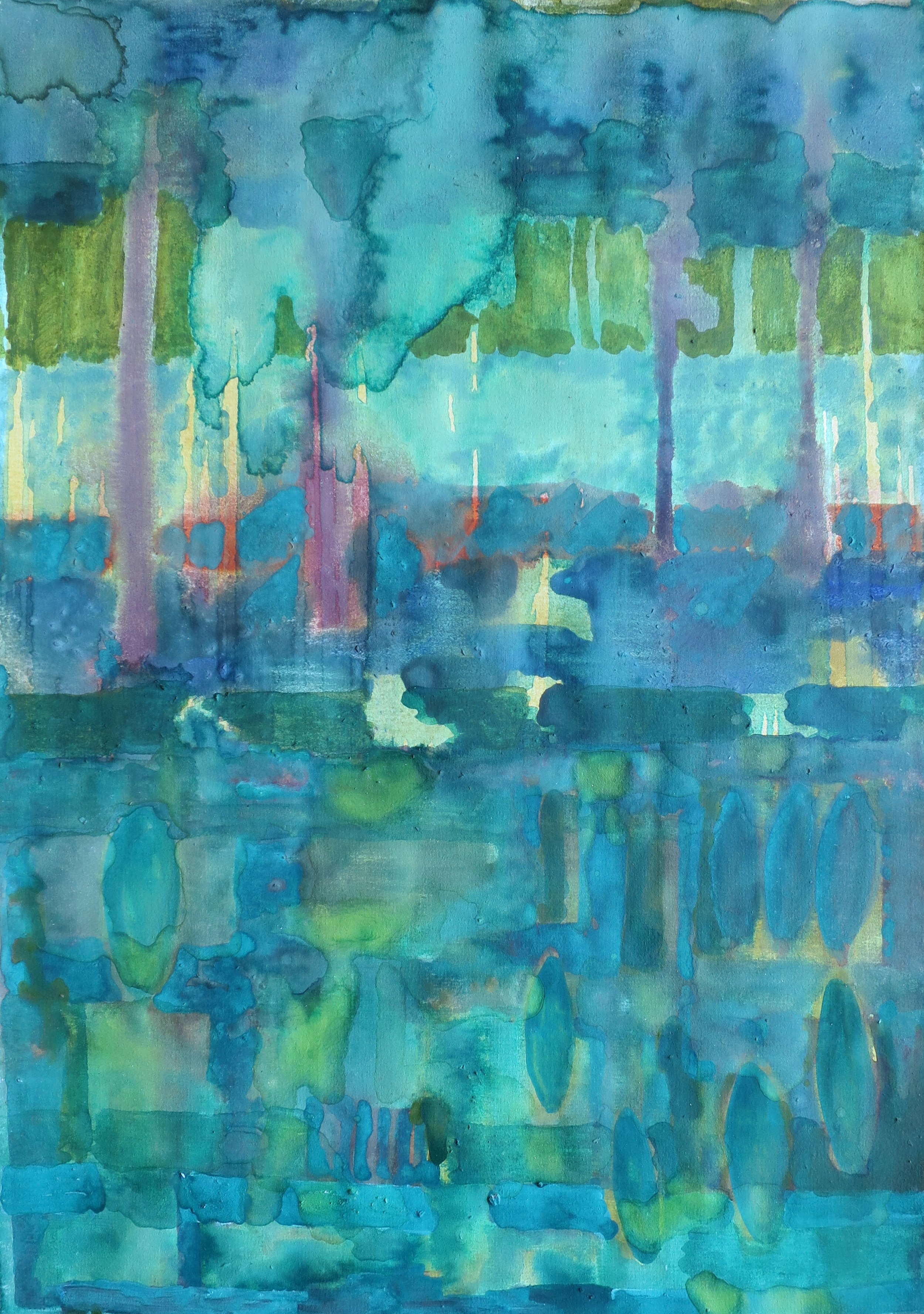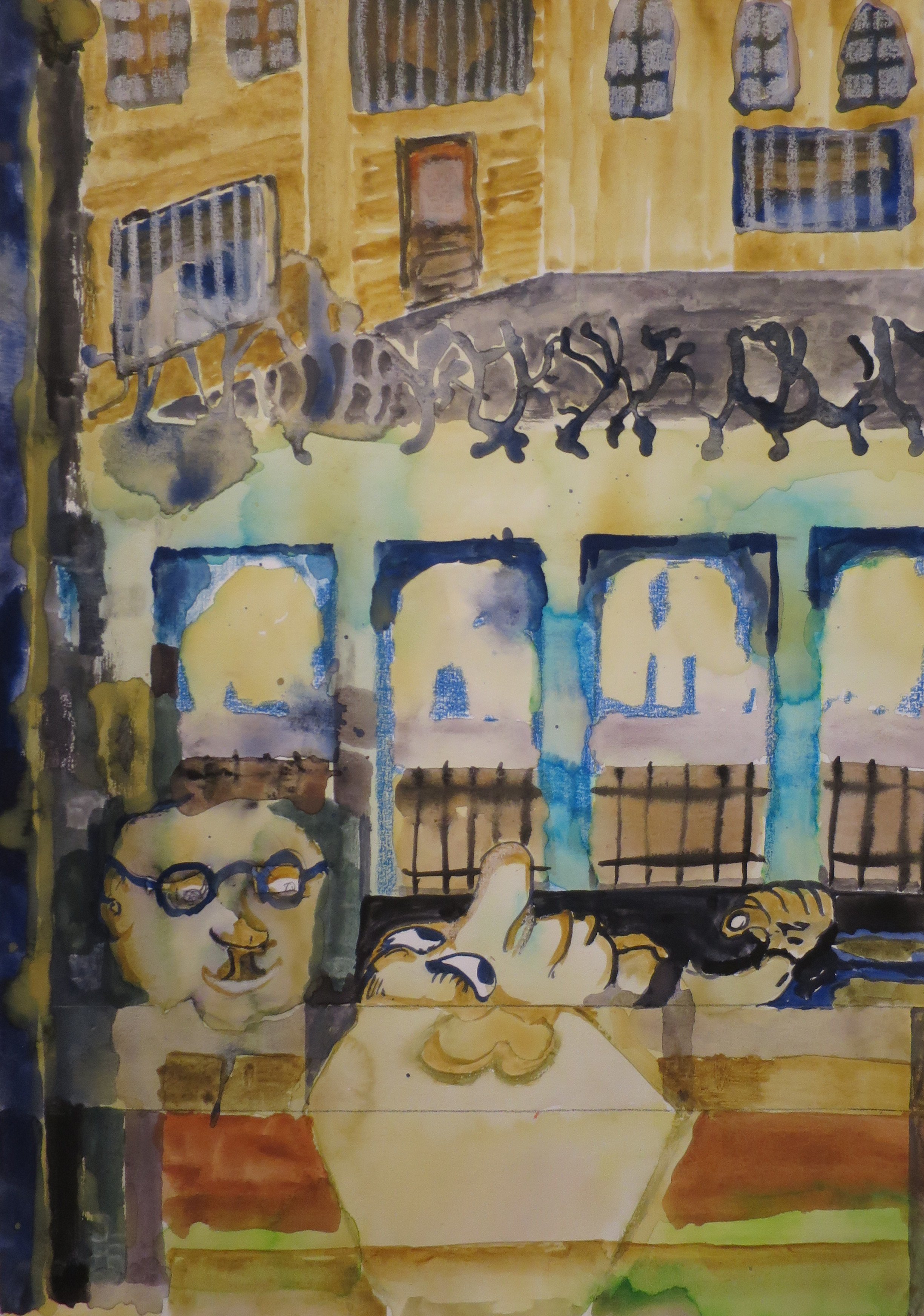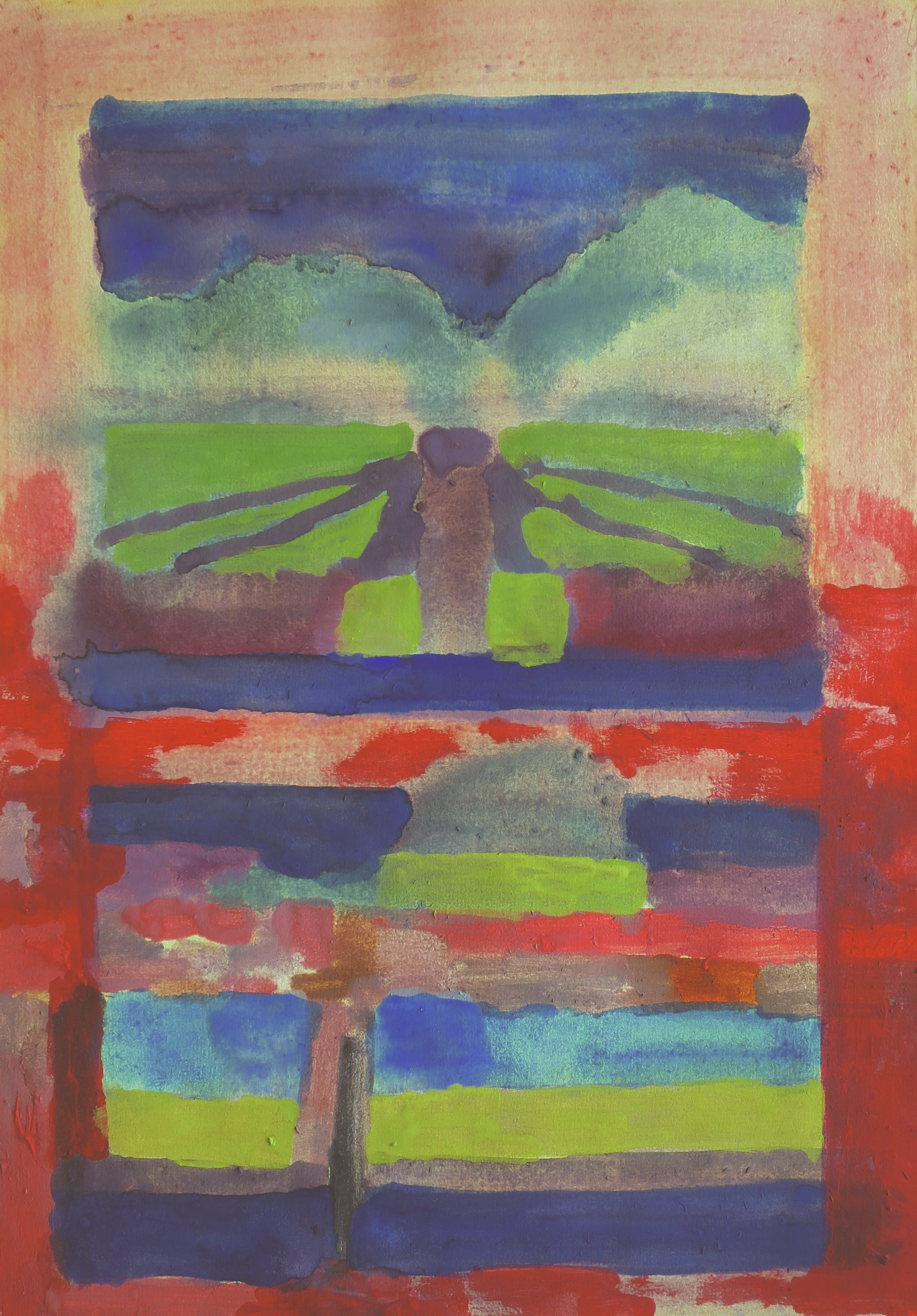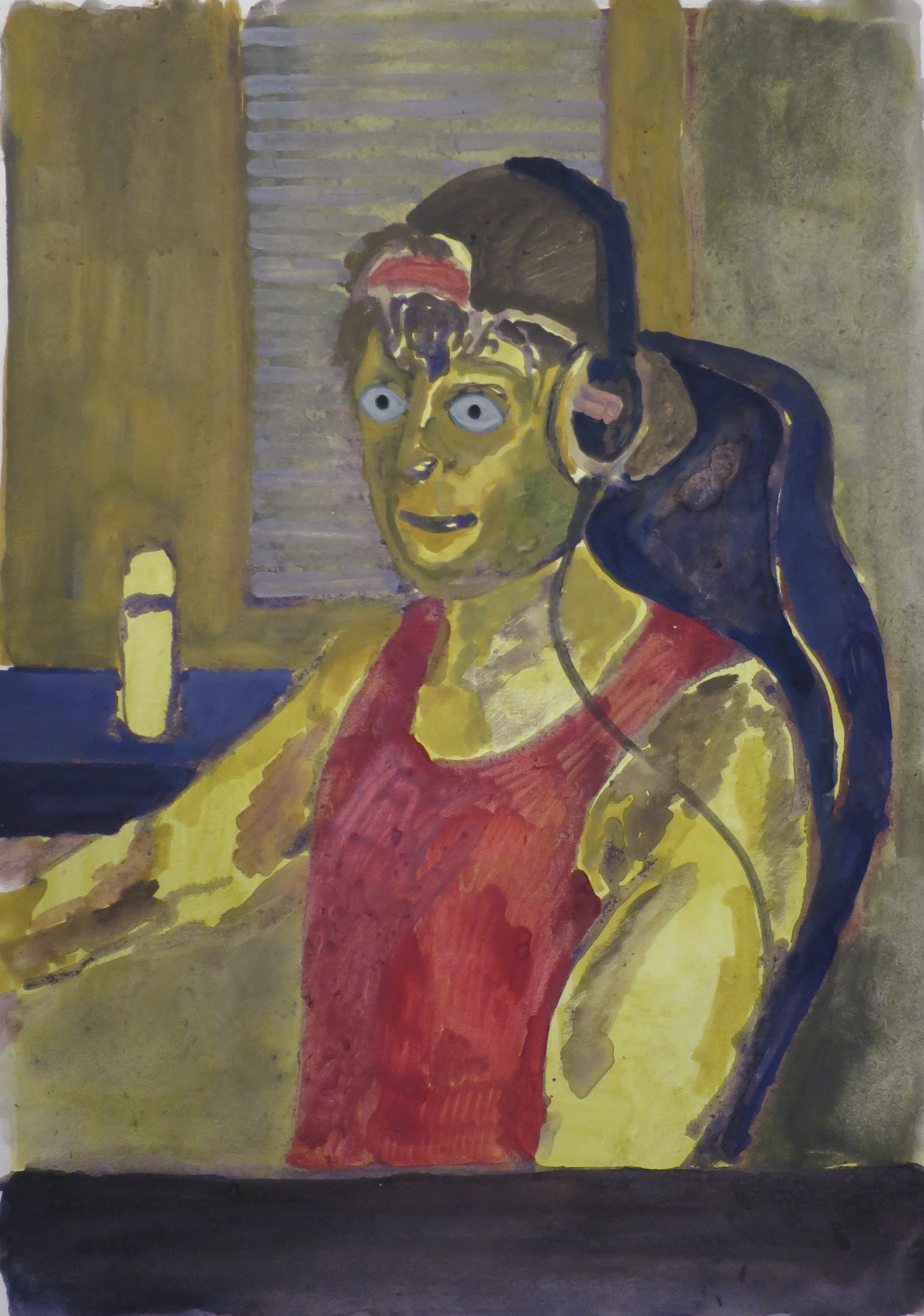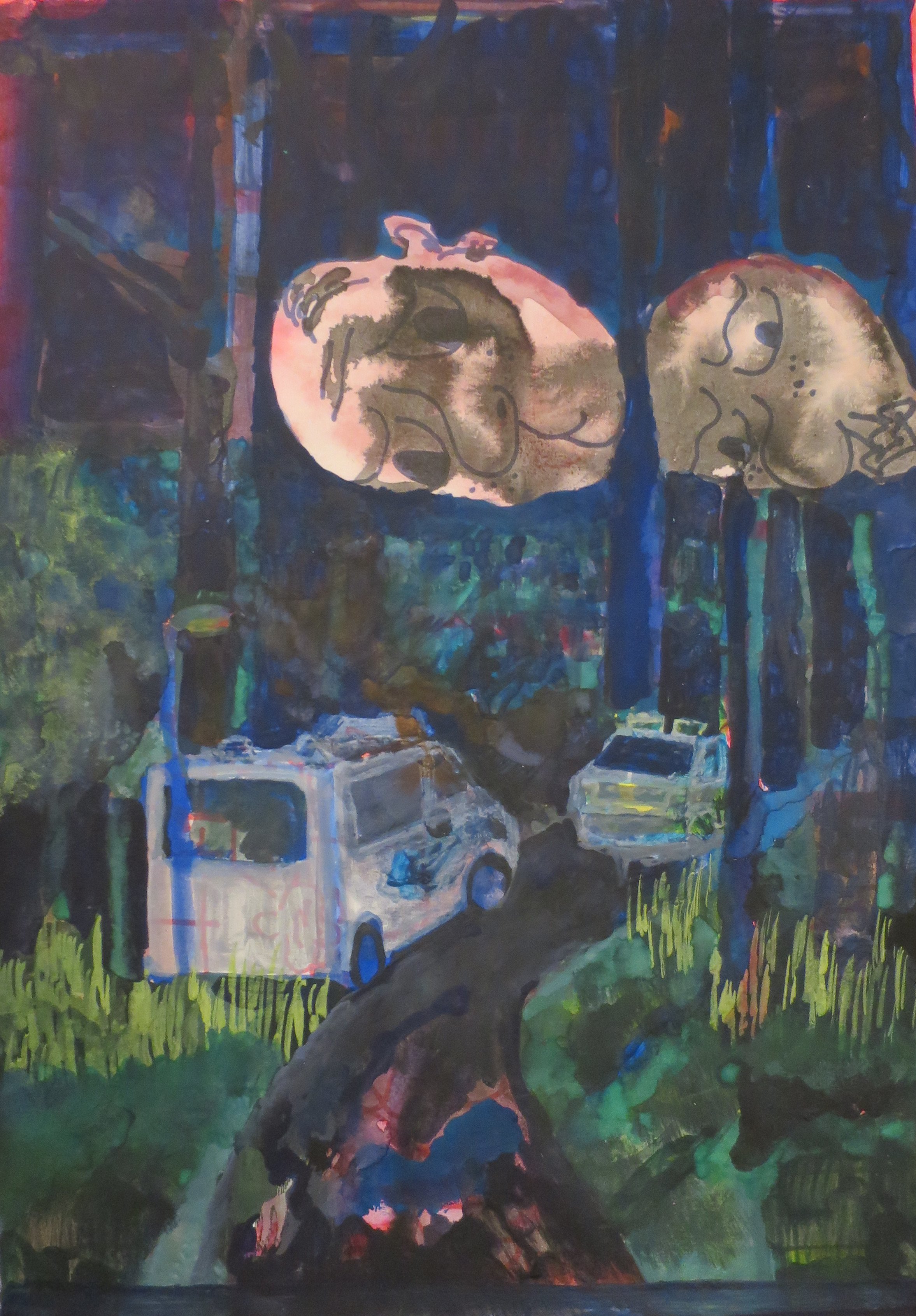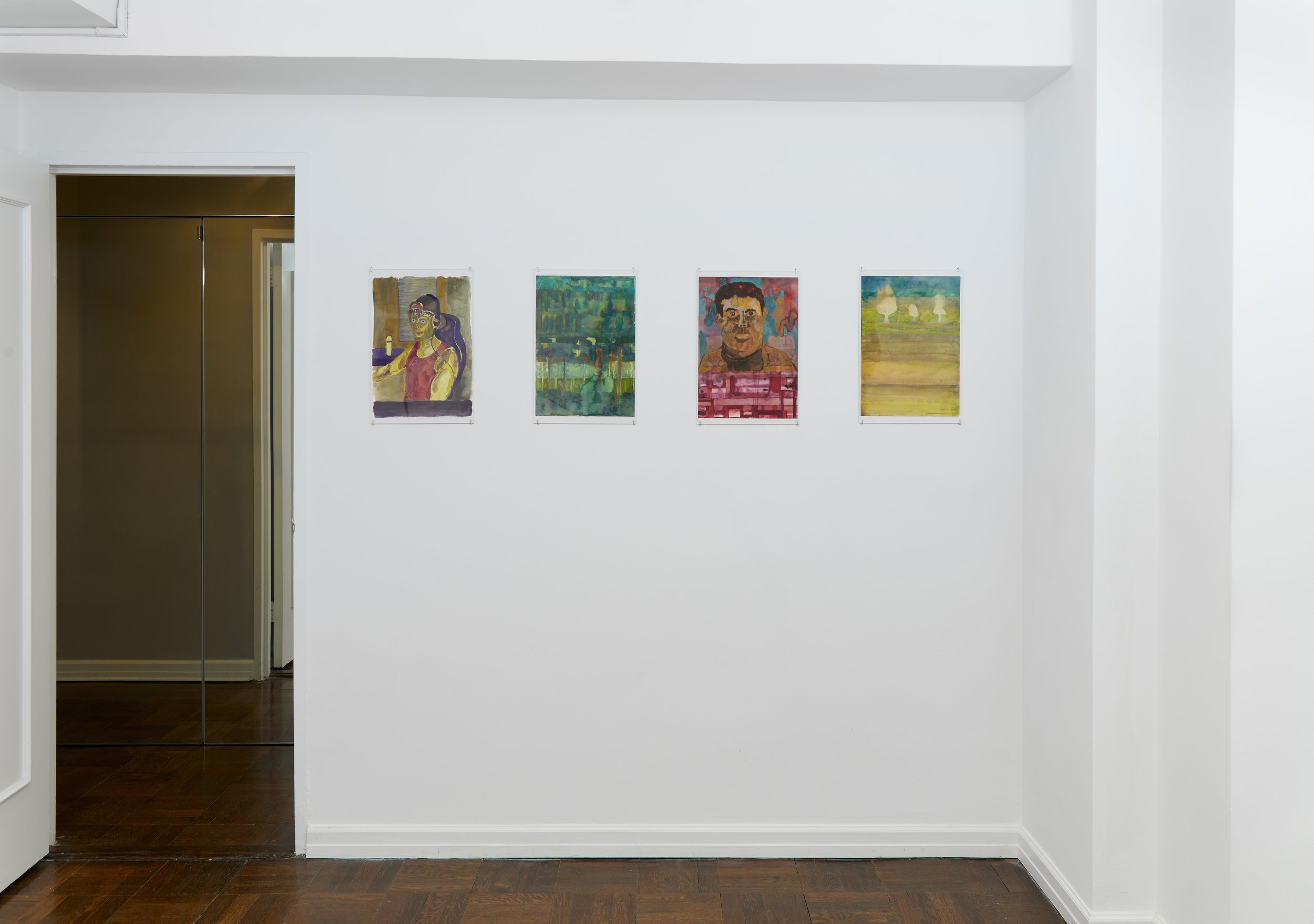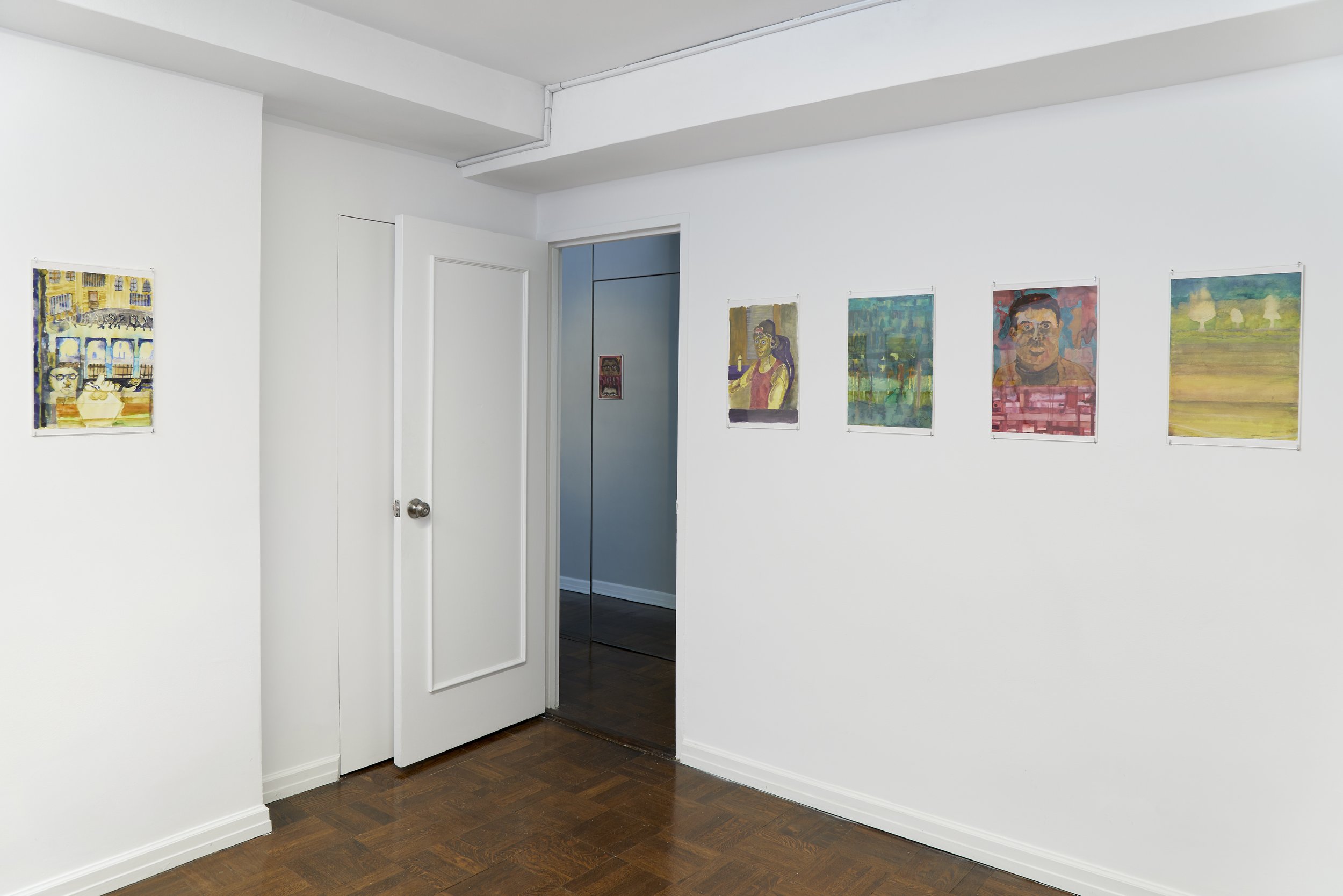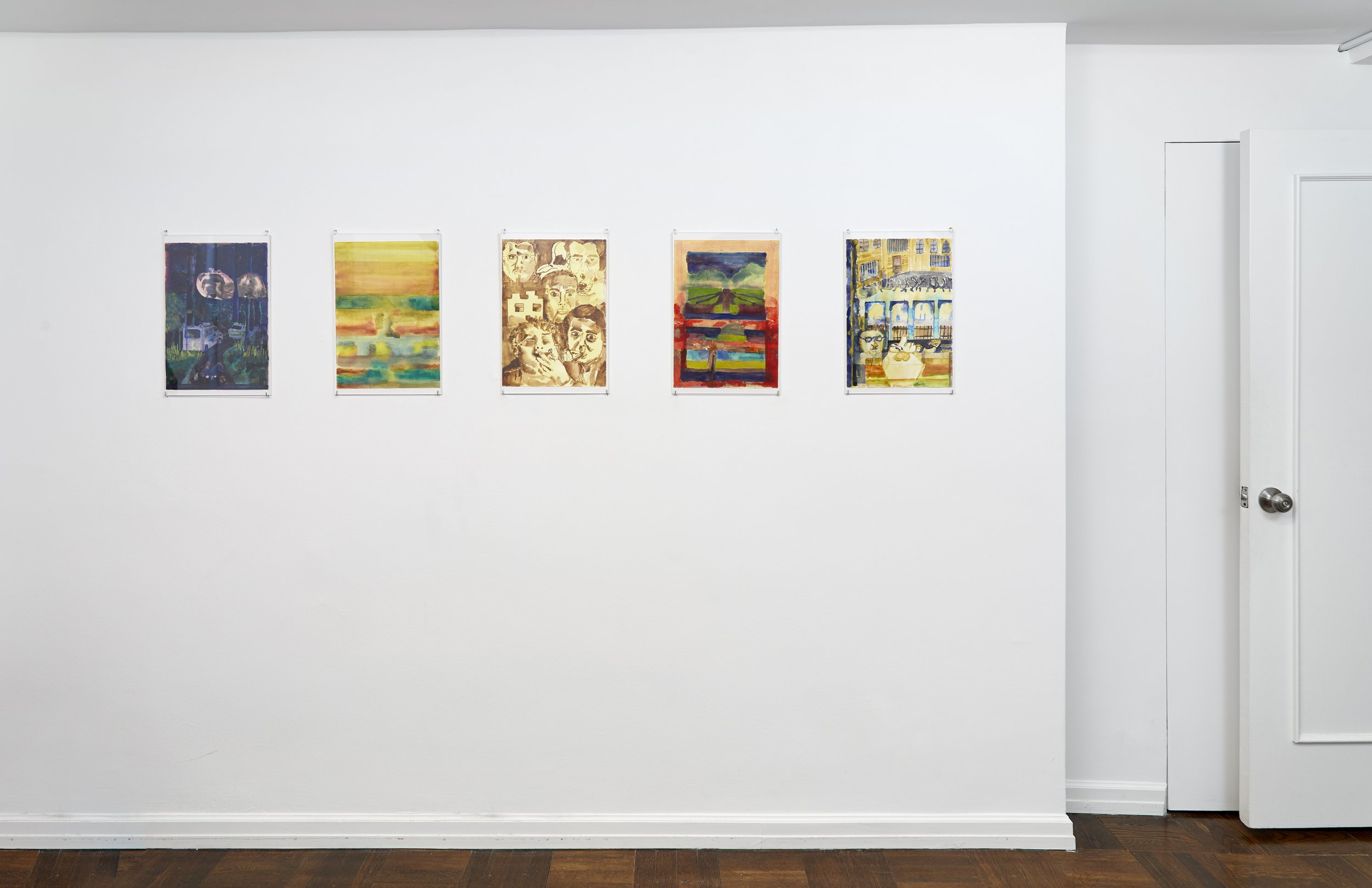Louis Reed
568 Grand St 10002
info@louisreed.nyc
Victor Lizana
The End of the Long 20th Century
March 12 - April 12 2022
Through a seemingly innocuous subject matter and technique, self-portraiture and landscape in watercolor, Victor Lizana aptly captures the heavy tenor of our current moment. The works mirror the attributes of the post-Truth era; exasperation, exhaustion and a total loss of meaning. The dissociation, disease, and isolation which humanity faces can’t be kept at bay and pour forth from Lizana’s brush.
Our first glimpse into The End of the Long 20th Century, “Self Portrait 1,” is of a split screen, two men wearing glasses, visible from the nose up. They are clearly plugged into machines trying to connect with each other. Their blank stares must immediately remind viewers of their own often vain search for connection over new technologies. This is compounded by the reflection viewers catch of their own eyes in the plexiglass above the painting. In a physical object, we experience our inability to escape digital isolation.
Of course, people need to work, play, fight and even try to heal in this brave new world. The painting of a zoned out young man who greets the viewer on the left flank of the main exhibition room explains the feeling of many nowadays, it is titled “Digital Soldiers on Speed.” On the right flank, in “The World of Yesterday”, a protagonist sits on a couch for analysis. Both the title of the work and the fact that the setting of the therapy session is a prison suggest that Freudian tools are insufficient for healing the wounds of the contemporary combatant.
When trying to engage with others through digital media we are not only physically isolated, we become intellectually and spiritually isolated as well. We get so much of what we want when looking at content generated by an algorithm that we end up with a sort of portraiture of oneself in our “feeds,” oftentimes based on little more than what one might be interested in buying or agreeing with. We live in an age of forced consumer-solipsism.
Lizana suggests that memes might be a salve or a weapon against the algorithm, and he would know. He is a prolific and masterful practitioner of the form. The “Crypto Skunks” paintings, which seems to crib as much from memes as it does Martin Kippenberger’s “Uno di voi, Un Tedesco in Firenze” are an example of this. On a single page, multiple self-portraits meet; Young Chong, a chicken that is Lizana’s signature meme character; another as the Shiba Inu Coin dog meme; and others of the artist rendered truer to life. Can the viewer, especially the computerized surveillance machine viewer, make any meaning from the Crypto Skunks portraits? Can anything be sold to 6 versions of the same person? Doubtful. Maybe the crypto skunk gets away?
The paintings that at first seem the most benign and ambiguous throughout the exhibition, the numbered landscapes, are actually the most direct and threatening. While meaning, community, and personhood melt away, so does the planet. Are the landscapes’ twists and turns, literal flooding of the page with water, a foretelling of the future or the present moment? None of it is pretty, but it is painted with such urgency and feeling that I can’t stop looking.
